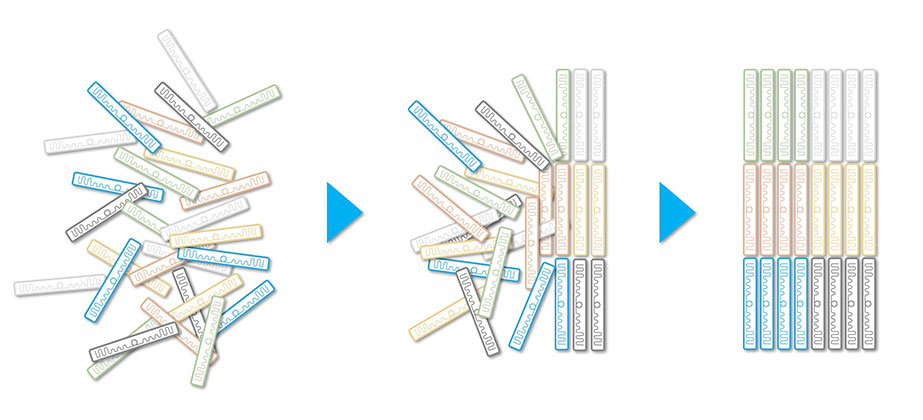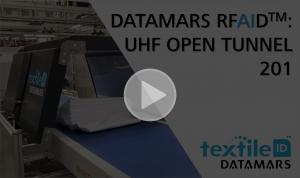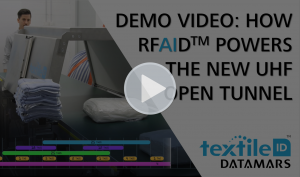Datamars marks another milestone in textile identification for the industrial laundry sector with the development of a new generation of reading systems based on Artificial Intelligence (AI) technologies.
Neural networks and machine learning algorithms are used to recognize and filter stray reads with an unprecedented level of accuracy, deploying all the potential of fully automated identification and tracking of textiles.
The world before RFAID™
The objective of an RFID system is to identify and track textiles along their entire lifecycle, generating transparent data that allows precise and automated inventory management, loss reduction, accurate invoicing and higher labour efficiency. The higher the RFID system accuracy is, the more these benefits are fully achieved.
But it’s not so easy. The curse and delight of UHF (Ultra High Frequency) RFID technology is its ability to read tags without line of sight and from a long distance.
This enables the technology to read thousands of textiles in bulk in a few seconds but also exposes it to the risk of accidentally reading unwanted tags (called stray reads) in the surrounding area, lowering the accuracy of the RFID data collection. Until now this challenge has mainly been addressed by containing and limiting the reading area as much as possible with mechanical shielding structures or by manually setting thresholds on reader parameters. This approach limits the flexibility of the RFID system and slows down operations.
How does machine learning apply to RFID?
Datamars, for the first time in textile identification for the industrial laundry sector, applies machine learning techniques to the RFID technology. Machine learning is a branch of the artificial intelligence that provides systems the ability to learn and improve automatically through experience and without being explicitly programmed. It examines the provided “training” datasets to find common patterns and build a model to make decisions.
Using machine learning algorithms and a specifically developed neural network, the system exploits the information extracted from the data of all the RFID tag readings to classify each tag. In this way, instead of working to avoid stray reads, the system is able to recognize and discard them.

The first RFAID™ reading system
The first reading system implementing the new RFAID™ technology is the new UHF Open Tunnel 201, performing the most accurate textile stacks reading ever!
This new tunnel uses neural networks and machine learning algorithms to:
_ recognize the right tags and filter stray reads (false positive tags detected accidentally by the reader) with an unprecedented level of accuracy;
_ correctly assign RFID tags to the proper stack of textiles in a continuous flow, even when spacing between stacks is limited;
_ get rid of unreliable threshold-based filters based on reader power and sensitivity.
By training the neural network with large amounts of data, the system does not require mechanisms, such as thresholds, to be set manually or with extensive and complex fine-tuning procedures. The greater the amount of data, the more precise and robust the neural network can become, easily adapting to multiple environments, use cases and laundry evolutions.





